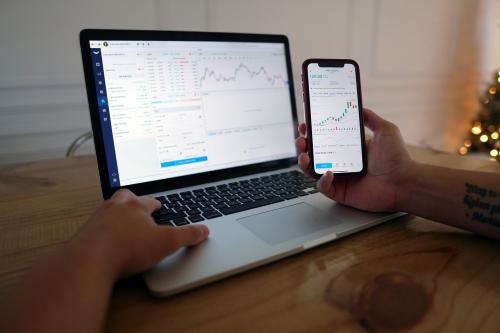Proxy season features flurry of votes on environmental risk disclosure.
With tsunami-induced nuclear reactor meltdowns in Japan, tornadoes obliterating towns in the American Midwest and the aftermath of BP’s calamitous oil spill still playing itself out, there was plenty of evidence during this proxy season that environmental risk factors are becoming a larger part of what can determine a company’s bottom line.
The tremendous damage caused by natural disasters across the globe was a convenient backdrop for activist investors pushing a slew of resolutions aimed at forcing companies to provide more disclosure about environmental, social and safety risks. Many of these initiatives were targeted at companies involved in the energy sector in the wake of the two highest-profile environmental calamities of last year, the Massey Energy mine explosion and BP’s Gulf oil spill.
‘We’re seeing a new breed of proposals this year,’ says Patrick McGurn, executive director of Institutional Shareholder Services (ISS). ‘I call it the ‘extract attack’. They target companies in the extractive sector – natural gas, oil and electric utilities dependent on coal.’
Some of the proposals have gained a surprising amount of traction among mainstream shareholders, particularly in the oil sector. It’s a development that – coming in tandem with the debut this year of new SEC reporting requirements on climate change risk – some point to as more evidence that the mainstream investment community’s embrace of environmental and social risk analysis has reached a tipping point.
Investor actions on the rise
Recently the AFL-CIO put forth proposals asking that seven companies in the oil industry report within 90 days of their annual meetings on the steps they have taken to reduce the risk of accidents. The effort drew mixed results. Proposals at Tesoro and Valero Energy were supported by 54 percent and 43 percent of shareholders respectively, yet did not pass. Exxon and Chevron successfully petitioned the SEC to remove the item from their proxies, but the AFL-CIO did score a victory when it withdrew its proposal from Sunoco’s ballot, after the company agreed to voluntarily implement a reporting process.
Utilities that rely on coal also found themselves in the crosshairs of activist investors. One group, As You Sow, is pushing a resolution that would require these companies to report on all the ‘financial risks of continued reliance on coal’, including the cumulative costs of environmental compliance, by September 2011. The resolution cites pending EPA regulations on coal combustion waste and coal price volatility, and targets eight electric utilities, including CMS Energy, Dominion, Duke Energy, Entergy and FirstEnergy.
Another slate of activists has filed petitions requiring that other companies report on efforts to reduce environmental and health hazards related to the risk of coal ash waste. At Ameren the proposal garnered almost 75 million votes compared to 67 million against, 19 million abstentions and 38 million broker non-votes, according to ISS.
Mainstream investors taking notice
Shareholder activism has been on the rise for much of the last decade, but a number of industry veterans argue that this year’s antics over environmental risk are worth noting in a larger context. For many years, environmental and social risk analysis was considered something pushed by fringe activists or ‘politically correct’ investors, with the larger investment community dismissing it as largely irrelevant.
‘Companies used semantics to disparage a particular set of concerns, but I think that has run its course,’ says Jon Lukomnik, a former executive for New York City’s pension benefits fund who is now managing partner of Sinclair Capital and executive director of the Investor Responsibility Research Center.
‘There are very fundamental business reasons why boards need to govern their environmental and social risks,’ he adds. ‘They have become bottom-line issues.’
In 2009, RiskMetrics, which owns ISS, acquired Innovest and KLD Research, two firms that specialize in evaluating environmental and social risks. McGurn says the acquisitions were made in large part because analytical front-office tools that were traditionally used by socially responsible funds are now in far greater demand.
‘Now mainstream investors want tools to help them assess the environmental and social risks,’ he explains.
Last summer, GovernanceMetrics International (GMI) merged with The Corporate Library. Paul Hodgson, a long-time research analyst at The Corporate Library who is now GMI’s chief communications officer, says this was done largely because GMI wanted to beef up its environmental and social risk analysis abilities.
Hodgson says that even before the Massey and Fukushima disasters there was a general recognition among institutional investing clients that the stakes involved with environmental issues were growing. ‘Their concerns were centered around the need for boards to address environmental issues before it was too late,’ Hodgson says. ‘It’s more than just global warming, although clearly global warming is part of the concern – it’s also volatile weather, even earthquakes.’
GMI now includes in its reporting a section on environmental risks that considers a wide array of metrics, ranging from how the company is managing and disclosing its climate risk and mitigation strategies to the number of actions levied by regulatory agencies against the company. The numbers eventually form part of GMI’s overall governance rating for the company. Hodgson’s advice to boards and corporate secretaries? ‘Disclose, disclose, disclose. The more shareholders know about the potential risks, the more they can factor those into their expectations about what the company is going to look like in the next one to 10 years,’ he says.
Placing a value on risk
According to Hodgson, pioneering corporate governance advocate Robert Monks argues that potential environment risks should actually be accounted for in financial terms, just as stock options are considered when calculating the company’s bottom line. Putting a dollar value on environmental risk is a science that a number of academics, economists and auditors are currently exploring.
Companies in high-risk industries may have to make these calculations to demonstrate their ability to withstand a crisis.
‘BP, for instance, should also be required to assess the risks its current offshore drilling stations represent as a potential for spill,’ Hodgson says. ‘If you do an analysis of the risk and the potential cost, then price it into your potential earnings and profits and loss accounts, it really focuses management and the board.’
Over the last decade, activists have changed their approach from telling companies to get out of certain industries to highlighting the risks that could affect a company’s bottom line if it fails to manage them properly. McGurn says that approach fit in well with the overall rise in investor activism that grew out of the Enron scandal and the financial calamities that followed. Activist investors pushing for environmental and social disclosure have found a receptive audience because the recent environmental shocks were ‘consciousness-raising events’ for the investment community in general.
‘If you owned stock in BP, you saw the value of your investment plummet precipitously overnight,’ says McGurn. ‘It was a clear instance where investors may not have thought through the financial risks.’








